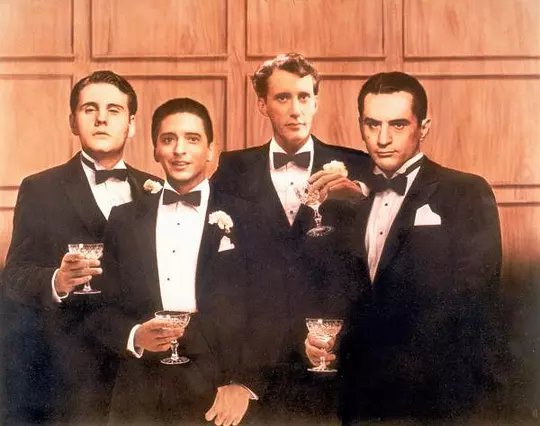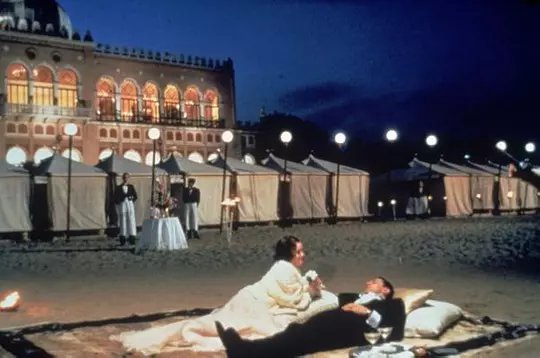Once Upon a Time in America movie review: Looking back on the past, there is no place to pay tribute to the sentiment

Once Upon a Time in America” is a classic gangster crime film directed by director Sergio Leone and released in 1984. Although the film focuses on the legendary story of the gangsters, it is a reversal of the traditional gangster genre film’s fixed dialogue model, with a rich camera language to express the human nature and emotions behind the story. It can be said that “Once Upon a Time in America” is another groundbreaking breakthrough in the genre.

Once Upon a Time in America” is set in the Jewish ghetto of New York City in the 1920s and 1960s. A group of unruly misfits and hoodlums storm the streets, bars, riverbanks and train stations. They use their unique antisocial behavior to explore and seize the material wealth and social status they dream of, and use their thoughts and emotions to shape the crystallization of the friendships and feelings that belong to them. In complete contrast to the optimistic mood of many American films, the film portrays a sorrowful gangster past with its lamenting and compassionate vision looking down on all beings.
The film recalls the passionate and sad past of the 1960s in a side-by-side narrative. The film’s narrative is constructed using three flashbacks, the use of flashbacks to avoid the film’s flat paintings and sense of conflict, and the use of characters recalling events from the past, which helps show the characters’ internal struggles to feel and look back on the past and recognize it in their current state of mind.

The protagonist’s childhood is childish, naive and loyal. Youth, on the other hand, is restless and mischievous. But at the same time, he focuses on pure love and friendship. This brings him joy and pain. In his old age, after a lifetime of wandering, he had undergone a fundamental change from his personality to his soul. He became very quiet and just wanted to live honestly, without any unreasonable thoughts. The things left to him are memories, pain and remorse, the past like smoke, unrealistic fantasies, poignant. Thus, the director makes good use of time and space structure to fully show the inner world of the characters.

Traditional Hollywood gangster movies are bloody and naked, full of vandalism and arson, and have an unchanging set of gangster movie operating patterns, such as stereotypical plots and solidified characters. Although such elements are present in Once Upon a Time in America, the director does not focus on describing these elements in the narrative, nor does he pay much attention to the action plot, but focuses more on the character relationships and the content behind the story. In a dysfunctional society back then, criminals gradually developed gradually from their teenage years into mature gangs, and their behavior, views are closely related to the society. The director did not try to highlight the violence and other events, but tried to show the inner soul of the characters, and the performance of these souls makes the film more artistic.
As we all know, “Once Upon a Time in America” spent about ten years on the overall process to make various attempts and efforts, so every scene in the film was patiently shot and retouched, and the film is also profound in the originality of music selection. For example, the director chose an American religious hymn as the first song in the opening scene, which clearly highlights the theme of redemption. At the end of the film, Max jumps into a garbage truck to destroy himself, and once again the director clearly nails the topic of salvation, making the former a perfect echo of the final ending.

The film’s soundtrack not only hints at the theme of redemption, but also at other content. From the lyrics and tunes of the various episodes, we hear the heroic enthusiasm that flowed from the people’s desire for America in those times, as well as their desire for a new life. More importantly, the director cleverly uses the soundtrack to express the disillusionment of the American dream and to illustrate the tragic fate of the heroes.

Throughout the film, “Once Upon a Time in America” is a masterpiece of Hollywood’s smooth editing and gangster genre, a film that deserves to be enjoyed again and again. In terms of the director’s camera language, the film almost perfectly presents the full picture of the story. In terms of style, it not only carries the unique arrogance and vintage literary sense of the era, but it is also full of helplessness and pain in the midst of bloodshed about the abyss of humanity and the struggle of fate, just like other great genre films. The film uses a very good audio-visual language, behind the narration of the gangster story to show a profound connotation and reflection of the times, it can be said that the film is undoubtedly a classic work in the history of gangster films can not be ignored.
